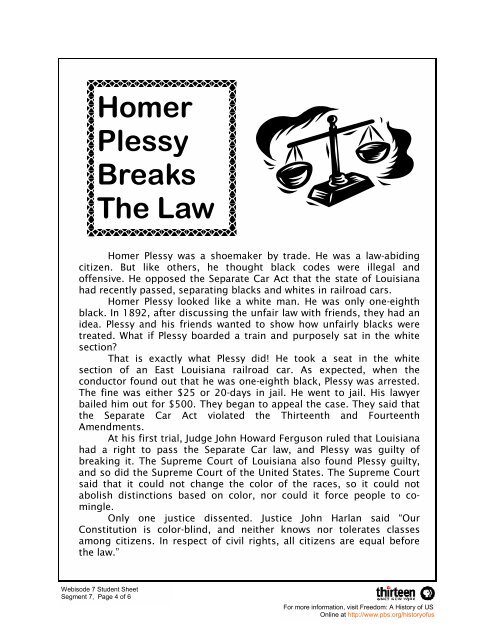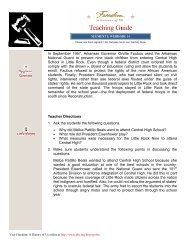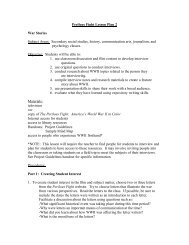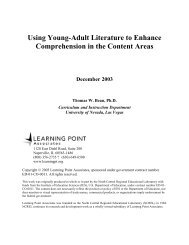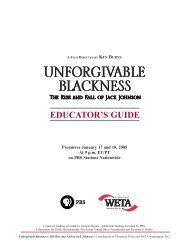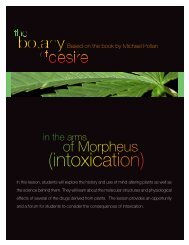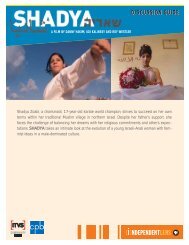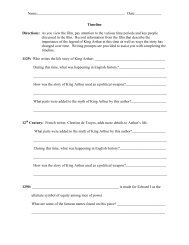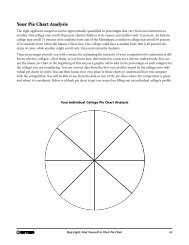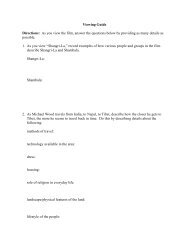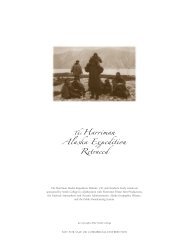Plessy v. Ferguson - PBS
Plessy v. Ferguson - PBS
Plessy v. Ferguson - PBS
You also want an ePaper? Increase the reach of your titles
YUMPU automatically turns print PDFs into web optimized ePapers that Google loves.
Homer<br />
<strong>Plessy</strong><br />
Breaks<br />
The Law<br />
Homer <strong>Plessy</strong> was a shoemaker by trade. He was a law-abiding<br />
citizen. But like others, he thought black codes were illegal and<br />
offensive. He opposed the Separate Car Act that the state of Louisiana<br />
had recently passed, separating blacks and whites in railroad cars.<br />
Homer <strong>Plessy</strong> looked like a white man. He was only one-eighth<br />
black. In 1892, after discussing the unfair law with friends, they had an<br />
idea. <strong>Plessy</strong> and his friends wanted to show how unfairly blacks were<br />
treated. What if <strong>Plessy</strong> boarded a train and purposely sat in the white<br />
section?<br />
That is exactly what <strong>Plessy</strong> did! He took a seat in the white<br />
section of an East Louisiana railroad car. As expected, when the<br />
conductor found out that he was one-eighth black, <strong>Plessy</strong> was arrested.<br />
The fine was either $25 or 20-days in jail. He went to jail. His lawyer<br />
bailed him out for $500. They began to appeal the case. They said that<br />
the Separate Car Act violated the Thirteenth and Fourteenth<br />
Amendments.<br />
At his first trial, Judge John Howard <strong>Ferguson</strong> ruled that Louisiana<br />
had a right to pass the Separate Car law, and <strong>Plessy</strong> was guilty of<br />
breaking it. The Supreme Court of Louisiana also found <strong>Plessy</strong> guilty,<br />
and so did the Supreme Court of the United States. The Supreme Court<br />
said that it could not change the color of the races, so it could not<br />
abolish distinctions based on color, nor could it force people to comingle.<br />
Only one justice dissented. Justice John Harlan said “Our<br />
Constitution is color-blind, and neither knows nor tolerates classes<br />
among citizens. In respect of civil rights, all citizens are equal before<br />
the law.”<br />
Webisode 7 Student Sheet<br />
Segment 7, Page 4 of 6<br />
For more information, visit Freedom: A History of US<br />
Online at http://www.pbs.org/historyofus


